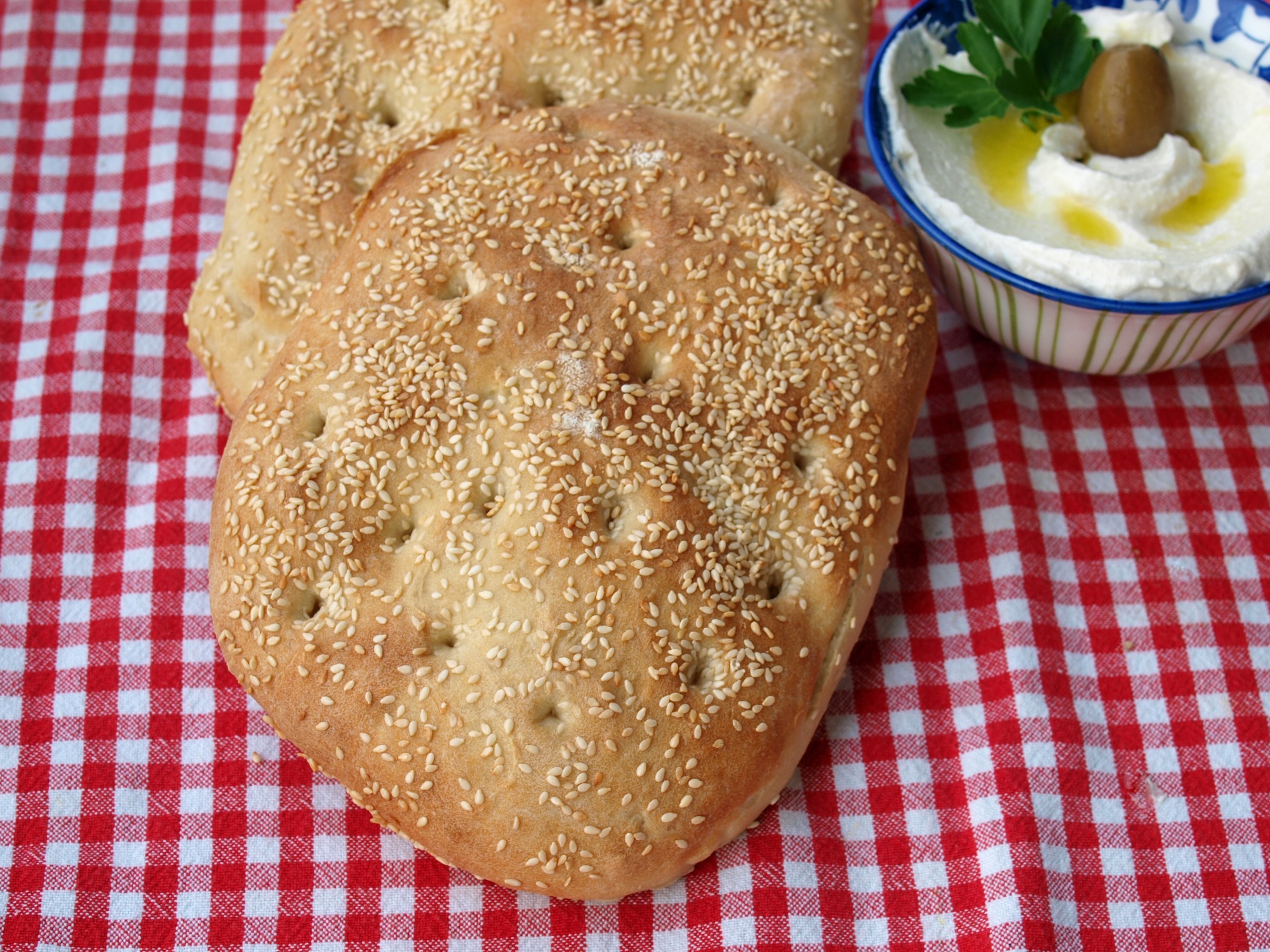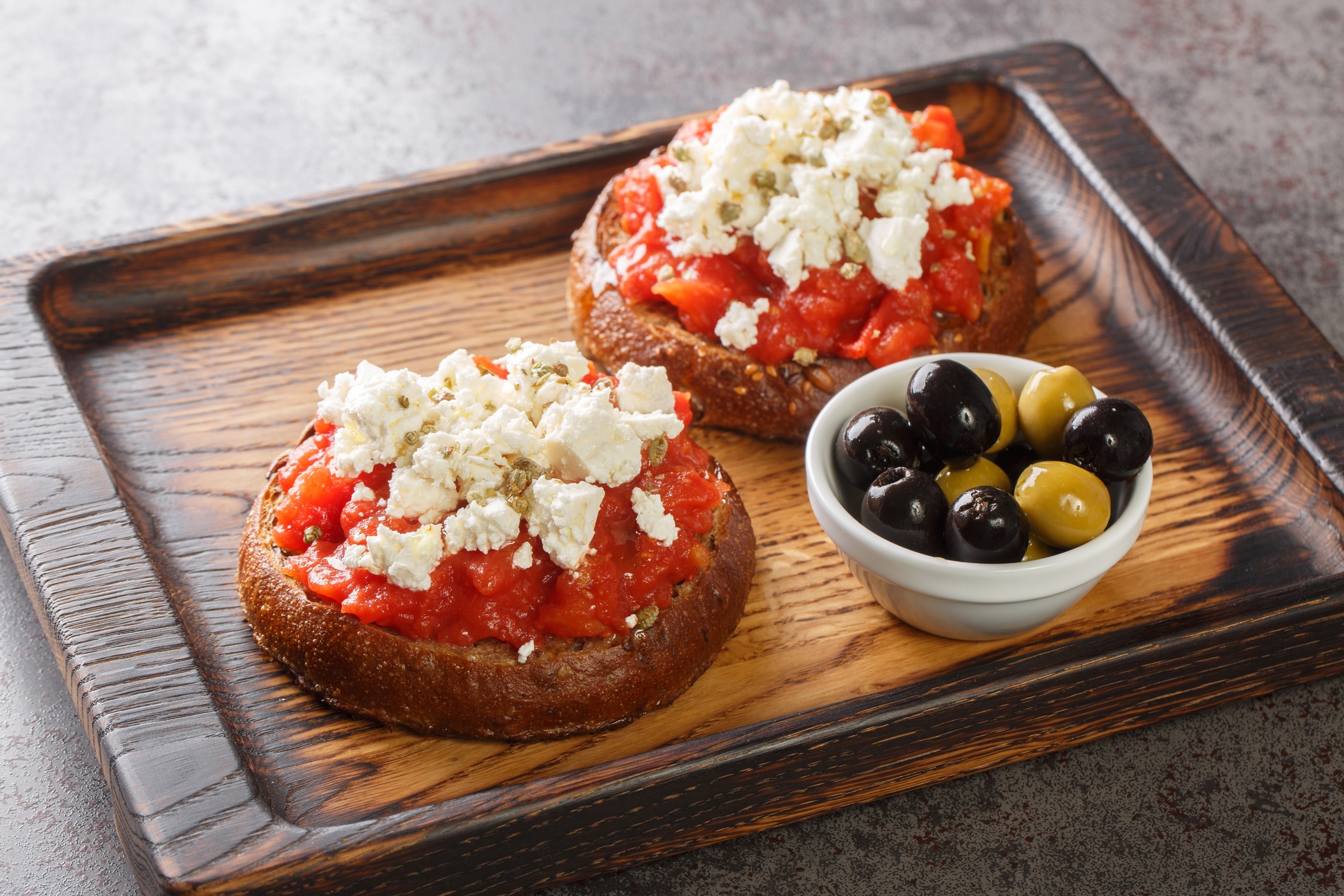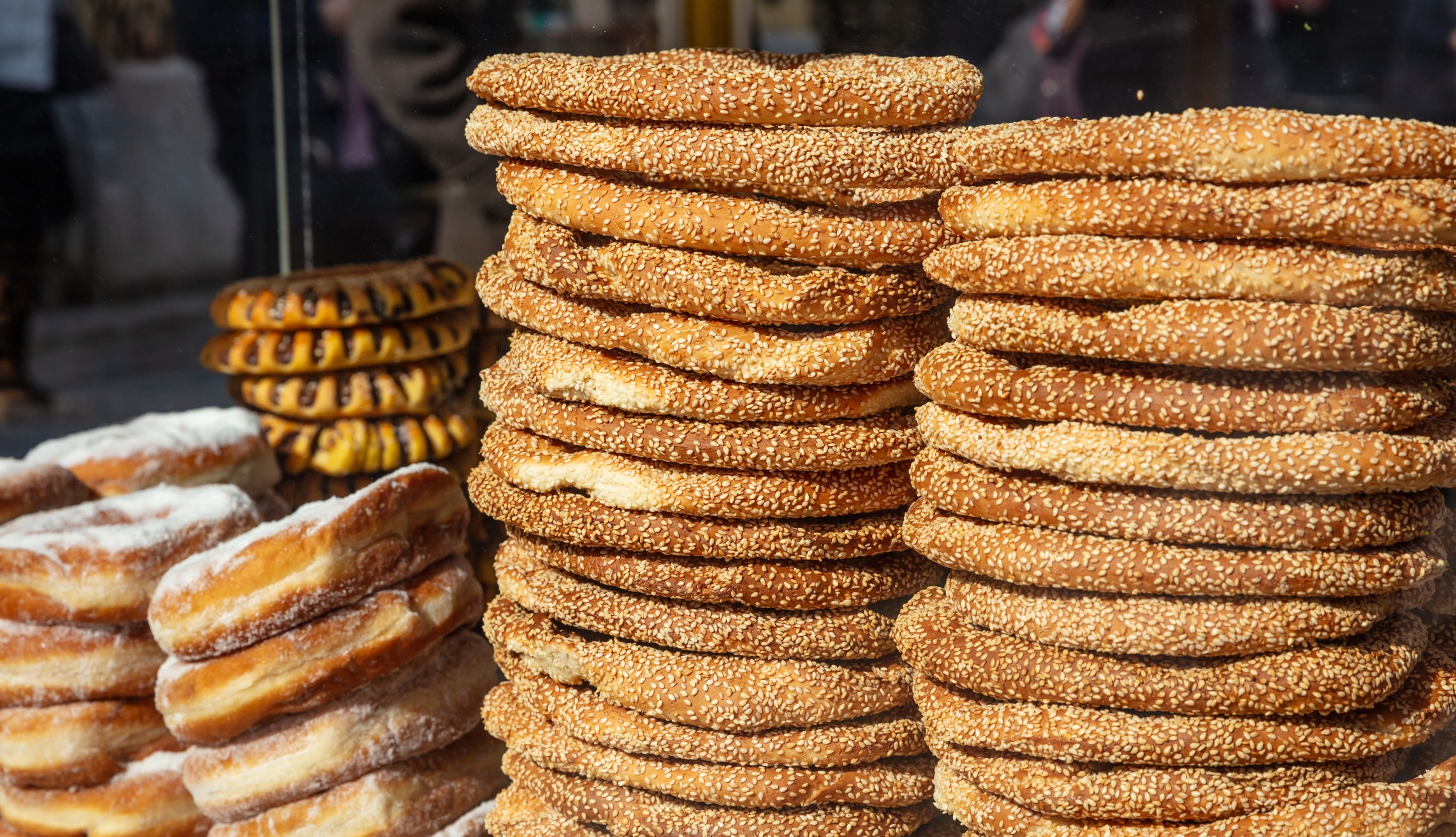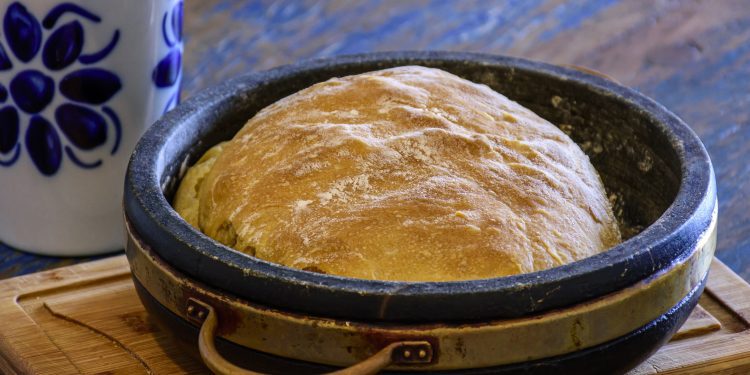Bread has always been at the heart of Greek cuisine, serving as a staple in daily meals and a symbol of hospitality and tradition. With its rich history and diverse regional variations, Greek bread offers an incredible range of flavors, textures, and cultural significance. From the fluffy, sesame-covered lagana to the crunchy, long-lasting paximadi, each type of bread tells a unique story about the region it comes from and the customs it’s tied to.
Let’s take a closer look at some of Greece’s most famous breads and discover what makes them so special.
1. Lagana – The Flatbread of Clean Monday
One of the most iconic breads in Greece, lagana is traditionally baked and consumed on Clean Monday, which marks the beginning of Lent in the Greek Orthodox calendar. This sesame-covered, unleavened flatbread has a soft and airy texture, making it the perfect accompaniment to the traditional Lenten dishes like taramosalata (fish roe dip), fava (yellow split pea dip), and olives.

Lagana’s simplicity reflects the themes of fasting and humility associated with the Lenten season. While it’s most commonly baked for Clean Monday, lagana has become so popular that many bakeries in Greece offer it year-round, especially for those who enjoy its light, crisp texture with dips and spreads.
2. Horiatiko Psomi – Greek Village Bread
Horiatiko psomi, or Greek village bread, is a rustic, hearty loaf that’s a staple in many Greek households. Made with a combination of wheat and barley flour, horiatiko psomi is typically baked in wood-fired ovens, which gives it a slightly smoky flavor and a thick, crunchy crust. The inside is soft, airy, and perfect for soaking up sauces and dips.
This bread is deeply tied to rural Greece, where people still bake it in traditional ways, often in large quantities to last for several days. It’s a versatile bread that pairs well with everything from olive oil and cheese to soups and stews, making it a beloved part of everyday meals.
3. Paximadi – The Double-Baked Delight
For centuries, paximadi has been a practical solution for preserving bread in Greece’s hot and dry climate. This twice-baked bread, often made with barley or a mix of grains, is hard, dry, and can last for weeks or even months without going bad. Paximadi was historically a staple for farmers and sailors who needed durable, non-perishable food during long journeys or hard labor.

Today, paximadi is a popular ingredient in dishes like dakos, a Cretan salad that combines the bread with ripe tomatoes, crumbled feta or mizithra cheese, olives, and a drizzle of olive oil. Though paximadi is tough when dry, it softens when soaked in water or topped with juicy ingredients, releasing its earthy, grainy flavors.
4. Tsoureki – The Sweet Bread of Celebrations
While many Greek breads are savory, tsoureki is a sweet, braided bread that’s most commonly associated with Greek Easter. This rich, fluffy loaf is flavored with mahlepi (a spice made from the seeds of wild cherry trees) and sometimes mastic, giving it a slightly sweet and aromatic flavor. The dough is enriched with eggs and butter, which gives tsoureki its soft, cake-like texture.

Tsoureki is often baked with a red-dyed egg nestled in the braid, symbolizing the resurrection of Christ. While it’s most closely associated with Easter, tsoureki is also enjoyed during other festive occasions, including Christmas and New Year’s. Many Greeks love to have it with their morning coffee or tea, enjoying its light sweetness and soft crumb.
5. Eliopsomo – The Olive Bread of the Greek Islands
If you’re a fan of olives, eliopsomo is the bread for you. This savory loaf is packed with juicy, salty Greek olives, typically from regions like Kalamata or Crete. Eliopsomo can be made with various types of flour, but it’s usually a combination of wheat flour and olive oil, which gives it a dense yet tender crumb.
Eliopsomo is perfect for snacking or serving as a side to Greek salads, stews, and grilled meats. Its olive-infused flavor pairs beautifully with other Mediterranean staples like feta cheese, roasted vegetables, and olive oil dips.
6. Koulouri – Greece’s Favorite Street Bread
If you’ve ever walked through the streets of Athens or Thessaloniki in the morning, you’ve likely seen vendors selling koulouri, a round, sesame-crusted bread that’s slightly crisp on the outside and soft on the inside. Koulouri is a beloved snack for Greeks on the go, often enjoyed with a cup of coffee or as a quick breakfast.

Its simplicity and convenience make it a popular street food, but koulouri can also be found in bakeries and cafes across Greece. It’s similar to a bagel but lighter and less chewy, making it a perfect on-the-go treat for both locals and tourists alike.
7. Psomi me Prozymi – Sourdough Bread
Like many ancient civilizations, the Greeks have a long history of baking sourdough bread. Known in Greece as psomi me prozymi, this bread is made using a natural sourdough starter, which gives it a tangy flavor and chewy texture. The natural fermentation process, combined with the use of whole grains, makes psomi me prozymi a healthy and flavorful option that pairs well with nearly any dish.
In rural areas, families still maintain their sourdough starters, often passed down through generations, and bake their bread in large outdoor ovens. Sourdough bread in Greece is cherished for its robust flavor, versatility, and nutritional value.
From the simple, sesame-studded lagana to the sweet, celebratory tsoureki, Greek bread is an essential part of the country’s culinary heritage. Each type of bread tells a story of the region it comes from and the traditions that continue to shape it today. Whether you’re looking for a savory snack like koulouri or a more substantial loaf like horiatiko psomi, Greek bread offers a delicious way to connect with the history and flavors of Greece.











